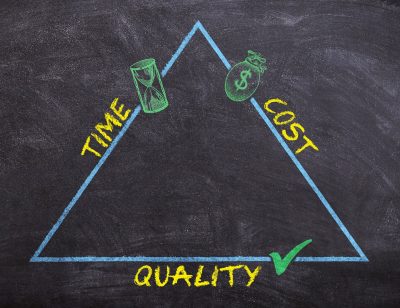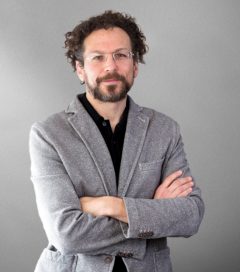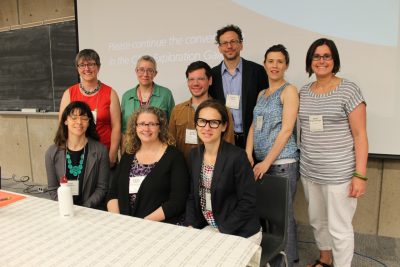by Chelsea Nash, CFICE Communications Research Assistant
 Post-secondary institutions have specific timelines, long processes for things like ethics approval or grant applications, and generally speaking, a complex power structure that can involve some firm top-down governance.
Post-secondary institutions have specific timelines, long processes for things like ethics approval or grant applications, and generally speaking, a complex power structure that can involve some firm top-down governance.
These factors can easily complicate a campus-community partnership, particularly if the community partner is unsure or unfamiliar with how the academic environment functions. In CFICE’s year four summary reports, community partners from multiple hubs expressed their frustration with the “mismatched timelines between academic and community partnerships.”
Charles Levkoe, an academic co-lead with the CFICE project, said that his community counterpart often talked about how everything changed once they understood how the academic cycle worked.
It’s important for academic and community partners to be on the same page as much as possible in order to ensure an effective and fruitful partnership. For community organizations who have limited experience working with academic institutions, here are some things to expect when entering a partnership with a post-secondary institution.
First steps when working with a post-secondary institution
For those that have never partnered with an academic institution before and are completely unsure of what to expect, Dr. Levkoe suggests finding a broker organization as a first step. Broker organizations can sometimes be housed within post-secondary institutions themselves, and it is their job to be well-connected with the institution and with community organizations.
Additionally, ensuring that your community organization finds the right person or people to work with is all about doing the research ahead of time, something Dr. Levkoe said a broker organization can be really helpful with.
However, if you have your own relationships with people within a post-secondary institution, it might be best to start there instead. “A lot of the best community-campus engagement work I’ve seen goes through people,” Dr. Levkoe said. “They know how I work, I know how they work, we have a trust that’s built up. And those things don’t come overnight,” he added.
Similarly, CFICE’s year four summary reports echoed the importance of previously existing personal relationships as being important building blocks for any partnership.
Have realistic expectations about timelines
One academic partner in CFICE’s Violence Against Women hub said that often, community organizations have “fairly unrealistic views of how quickly it can happen…They don’t know how long it takes to get ethics approval and they are frustrated by the delays. From their point of view it is just ‘why don’t you just get on with [it] and just do it!” The academic partner here echoed concerns of a “timeline mismatch” between the community and academic partners, but also acknowledged the unique time limitations that community partners experience, where “people are so busy, so overwhelmed” that the slow pace of academic research “makes them less interested in the actual research.”
When discussing how community partners can manage their expectations when entering into a partnership with an academic institution, Dr. Levkoe said that understanding the university structure is a good place to start.
“The university can be a very top-down institution that has a certain way of doing things. Faculty have some freedom within that structure but most are already involved in a range of work. For example, if someone asked me to do research with them, even if I love the project, I have classes I teach, I have students I’m supervising and it’s not something I can easily add to my plate. I need to plan ahead, I need to make time, make space, sometimes I need to apply for grants, and that can take up to a year.”
Academic timelines and community-campus engagement (CCE) projects
In most universities, the academic timeline consists of two main semesters of teaching, the first being from September through December, and the second from January through the end of May. Often, academics have more time to conduct research, or participate in CCE projects, during the summer months, when their teaching schedule is much less demanding.
There are additional factors in academic timing that could impact when a grad student is hired for a research assistantship, for instance. And when it comes to sharing CCE project work, academic articles undergo a peer review process that makes publishing a lengthy process—often up to two years of editing and revising before an article makes it to print.
Exactly how these timelines could impact a project will vary depending on the institution and the academic partner, but being aware of the possibility that this four-month semester schedule could affect the flow and speed of a project can help to manage expectations.
Ethics = longer CCE timelines but enhance research quality

All projects are beholden to the project management triple constraint triangle. Projects can only adhere to two sides of the triangle at any given time.
What is ultimately important to remember is that the reason a lot of things move slowly through academia is because there are high standards of rigor and ethics.
“I think ethics is a good thing,” Dr. Levkoe said. “It’s not perfect; there’s lots of challenges…but it helps to ensure there are checks and balances”.
As someone who has also worked in the non-profit sector for many years, Dr. Levkoe said in that sector, “you write a grant, you often find out relatively quickly [if you were successful], and then the program goes ahead or it doesn’t. But academia works a bit differently.”
One way to effectively manage expectations is through outlining limitations and potential restrictions right off the bat. Partners in the Violence Against Women hub said that the first step in the partnership needed to be coming to a consensus about the structure, process, and goals for the hub. In this particular instance, because the CFICE project is funded by SSHRC, there were certain guidelines and pre-determined parameters on the process of the project that needed to be met. Clearly identifying these factors in advance was important to the community partners in this hub.
Community organizations partnering with an academic institution should keep in mind that depending on where the grant or funding is coming from, asking questions and having a clear idea of any limitations the grant might have on the project can be very helpful to do in advance.
Partnerships often extend beyond the ‘community-campus’ dichotomy
“We have to be careful about talking about communities and academics as being two separate things,” Dr. Levkoe said. “As academics, we are also community members.”
He said his engagement with the community involves sitting on boards, working with organizations “not necessarily as part of my research program, but as part of my service to the community, as part of my application of the stuff I’m reading and writing.” And, often times, he said he is the one who approaches community organizations to engage in a partnership.
“This relationship is really dynamic and evolving, it’s not straight forward at all,” Dr. Levkoe said. But being “realistic about what can happen” is a good place to start.


